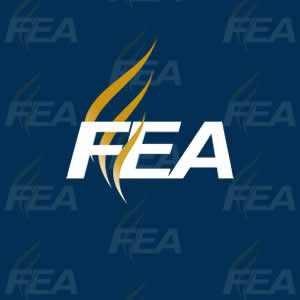FEA survey finds nearly 5,000 teaching vacancies, more than 3,700 open staff jobs
TALLAHASSEE — To a resurgent pandemic and a divisive debate over masks, add one more looming issue facing Florida’s public schools this August: More than 450,000 of our students may head back to school without full-time, certified teachers in their classrooms, according to the latest findings by the Florida Education Association (FEA).
In the absence of publicly accessible statewide teacher vacancy reports, the FEA conducts surveys of advertised vacancies for teachers and education support staff three times a year. The surveys are conducted the week before Aug. 10, in early October and in early January.
This August, FEA counted 4,961 teaching vacancies posted on district websites.
That number represents an increase of more than 67 percent from August 2020, when there were 2,962 advertised positions. It is a 38.7 percent increase over the vacancies reported pre-pandemic in August 2019.
“These numbers and trends are an alarm bell going off for our public schools, and state officials need to start listening. Educators have made clear why they’re leaving our schools, and young people will readily share why they don’t want to pursue an education career,” said FEA President Andrew Spar. “It’s past time for the governor and Legislature to focus on real solutions for the education staffing crisis — higher and fair pay, support and job security, and showing some respect for everyone who works in our schools.”
The FEA’s counts are a snapshot in time and likely represent only a fraction of actual vacancies, with many positions being unadvertised at the time of the survey. For instance, in previous years districts have relied on long-term substitutes to fill a substantial number of classrooms.
Further, there is the issue of teacher shortages in necessary academic areas. In January, the Department of Education released its annual Critical Shortage Report, which projected a shortage of 8,647 teachers qualified to teach the subjects our students need. This same report shows 13.5 percent of English classes and 8.1 percent of math classes statewide are taught by teachers who are not certified in the appropriate field. This, coupled with the dwindling numbers of new teachers entering colleges of education, paints a dire picture for our schools.
About the FEA’s surveys
Using conservative estimates, FEA’s finding of 4,961 teaching vacancies this August indicates that more than 450,000 students will be in a classroom without a certified teacher at the start of this school year. The vacancy count does not include charter schools, which do not typically advertise jobs on district websites.
Alarming numbers were also found in the support staff categories, with 3,753 advertised vacancies:
- More than 75 percent of school districts are advertising for bus drivers.
- There are 1,915 teacher aide/paraprofessional advertised positions.
- 661 food-service vacancies
- 648 open custodial, mechanic, carpenter and other trade positions
- 421 clerical/bookkeeper/office manager positions
Why Florida has difficulties recruiting and retaining teachers:
- The stress and uncertainty caused by the pandemic.
- Instability of the job without expectation of employment, as each spring annual contract teachers face non-reappointment regardless of their evaluations.
- Low pay. Even though Florida legislators have made an effort to increase starting teacher pay, the average Florida teacher salary still ranks 49th in the nation. Pay here is more than $10,000 less than the national average.
- Lack of freedom to do their jobs in the classroom due to heavy-handed policies established by the Legislature and the governor.
- Too much emphasis on high-stakes testing and teaching to the test.
- Lack of respect for the profession.
###
CONTACT: Joni Branch, joni.branch@floridaea.org, (850) 201-3223
The Florida Education Association is the state’s largest association of professional employees, with 150,000 members. FEA represents PreK-12 teachers, higher education faculty, educational staff professionals, students at our colleges and universities preparing to become teachers and retired education employees.

